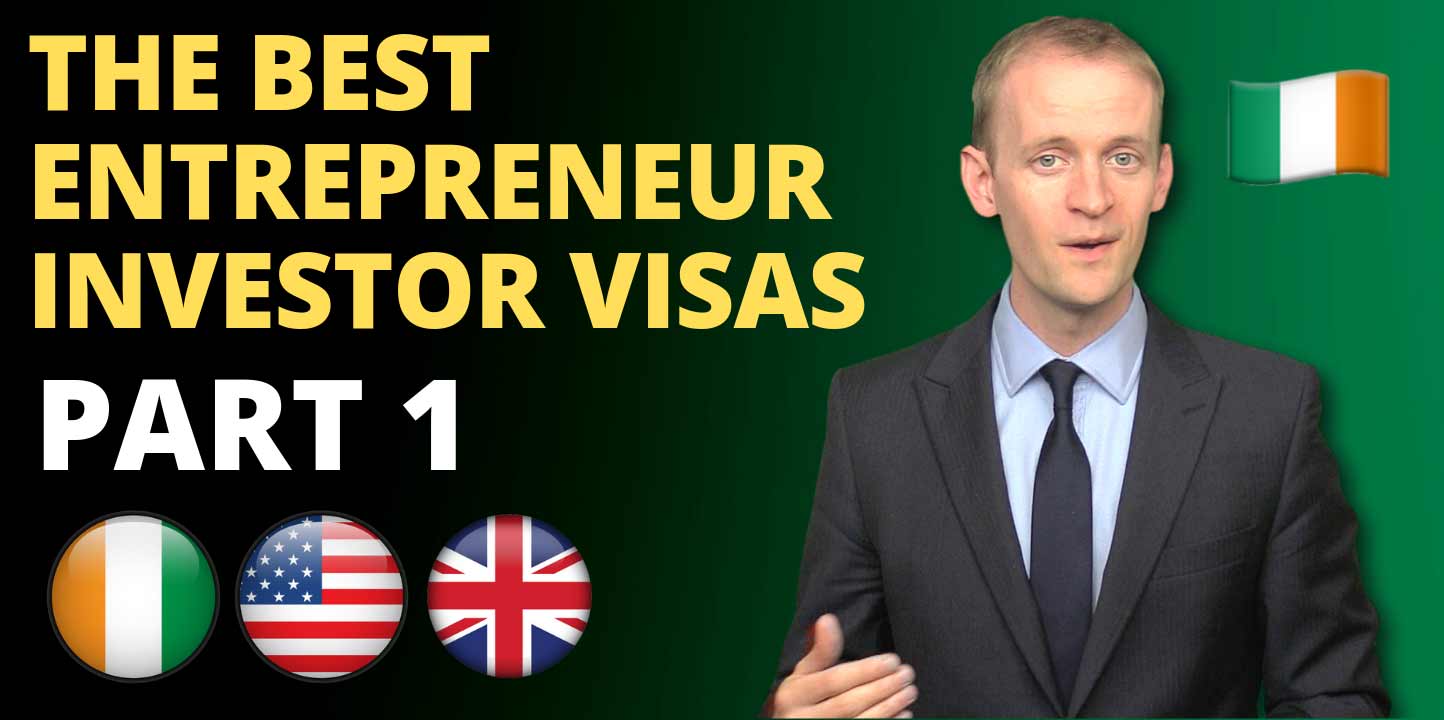
In this 10 part video series I discuss the best innovator visas, comparing Ireland and the USA.
1. Entrepreneur Visa Programs For The UK, Ireland And The USA
In this video, I’m going to compare the entrepreneur visa programs for the UK, Ireland and the USA.
We’re gonna work out which one is best for you. If you are starting a business abroad. You need to know which visa is going to give you permission to start the type of business you want, and also to be resident and to settle in the country, or have the option to naturalize as a citizen.
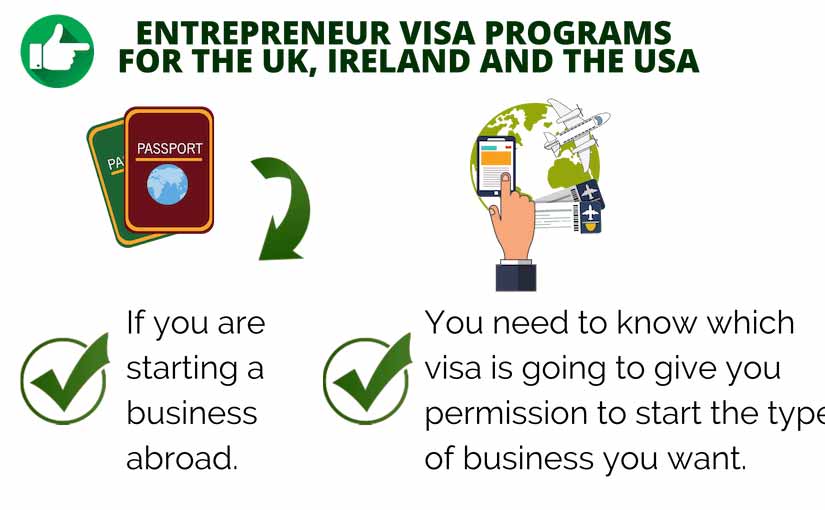
Entrepreneur visas can be a way to achieving these dual objectives – commercial goals. And residence planning, but there are important differences between the programs that you need to bear in mind.
They have different minimum investment amounts for different jurisdictions. And also varying restrictions on the kind of business you can establish.
2. High Potential Start-Up
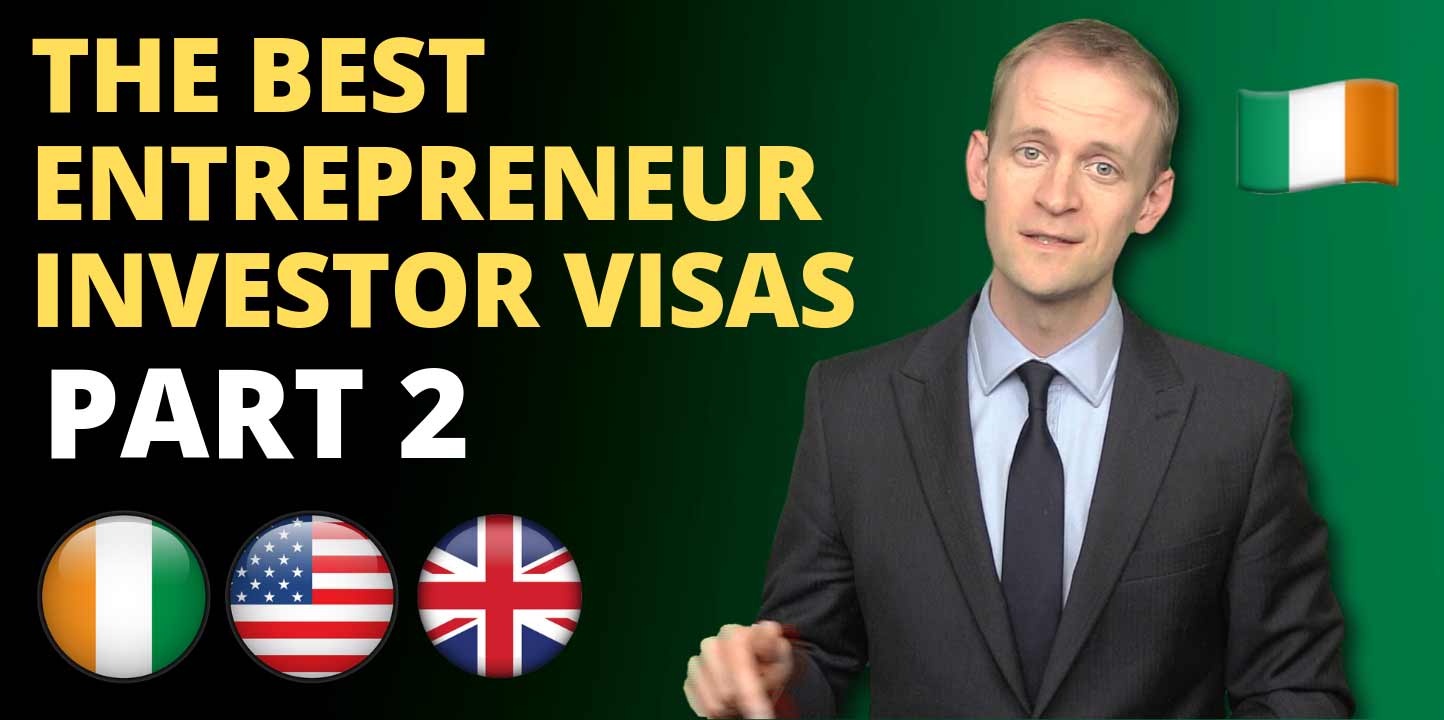
So in Ireland, there is an entrepreneur visa route which requires a minimum investment of €50k euros.
These can be your own funds or a loan. But it’s premised on your business is a “high potential startup”.
The criteria are really quite tough. You’ve got to show among other things that your business is capable of creating 10 jobs in Ireland. And €1 million in sales within 3 years of starting up.
High threshold
Not every business is going to be able to do this. It’s not impossible – I can assist you to achieve proving this in your application, with your business plan and so forth. – But its a high threshold.
The next level up from that in Ireland is a charitable donation of €500,000. Under the Immigration Investor Programme or €1 million as an “Enterprise Investment” in business there.
This can be your own business, but again, investing at the €1 million levels. Even if it’s in your own business, is not going to be for everyone, as an initial step. And there is clearly a big gap between investment levels.
3. Intermediate Level Investment
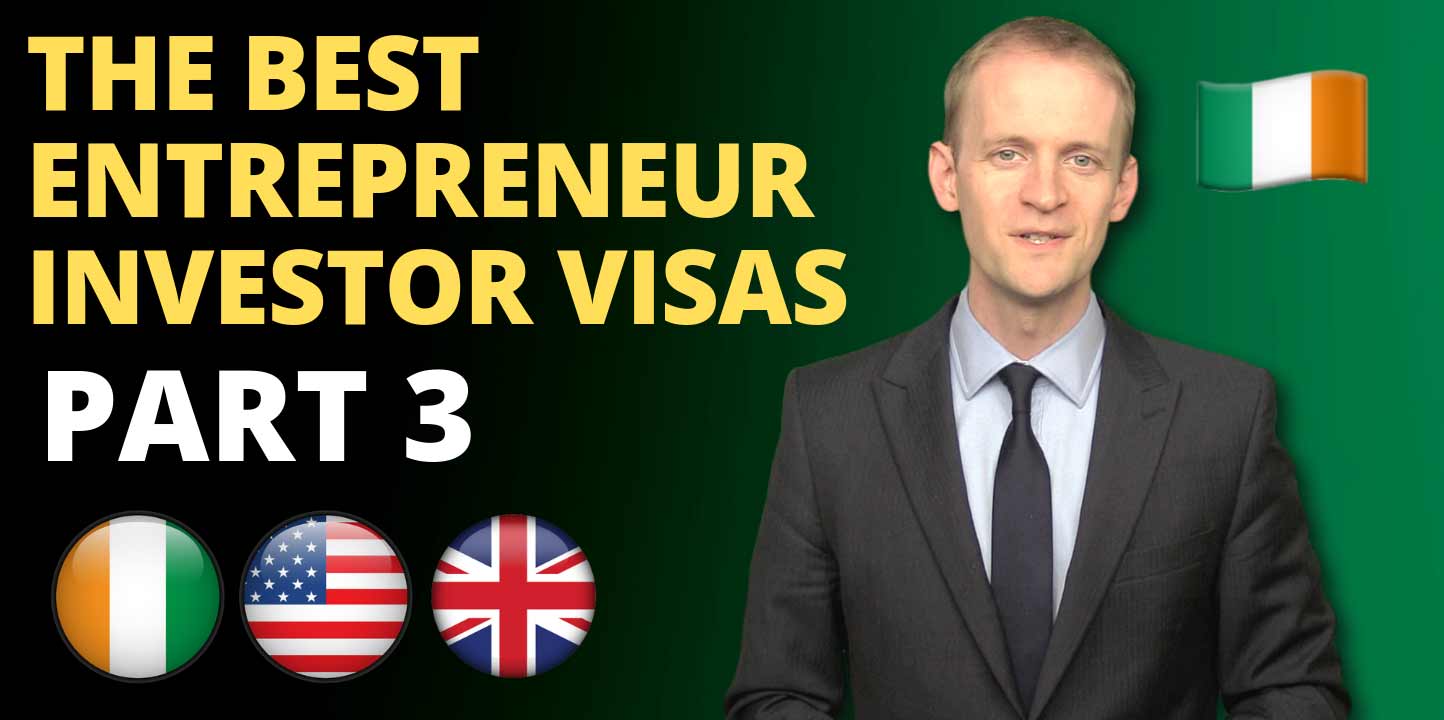
In the UK, there is a good intermediate level investment, of £200k, which I’ll come to in a second.
There’s also a £50k investment pathway, but unlike Ireland, the funds can’t be your own at the £50k mark.
They have to be from a government grant, or from specified seed funding or venture capital, which is challenging to secure.
Partner or from an investor
For the £200k route, those funds can be your own or made available to you by third parties, like your spouse, a partner or from an investor.
But there’s quite a high refusal rate for applications. Statistically, about half of Tier 1 Entrepreneur applications are refused. Mainly because the business plans are not put together properly. And the applicant is not properly prepared for the interview.
These are two of the areas I focus on with clients. It’s really important to make sure that your business plan is strong and that you follow through to make certain. You will qualify for an extension after the first 3 years and 4 months in the UK.
4. Tier 1 Investor Route
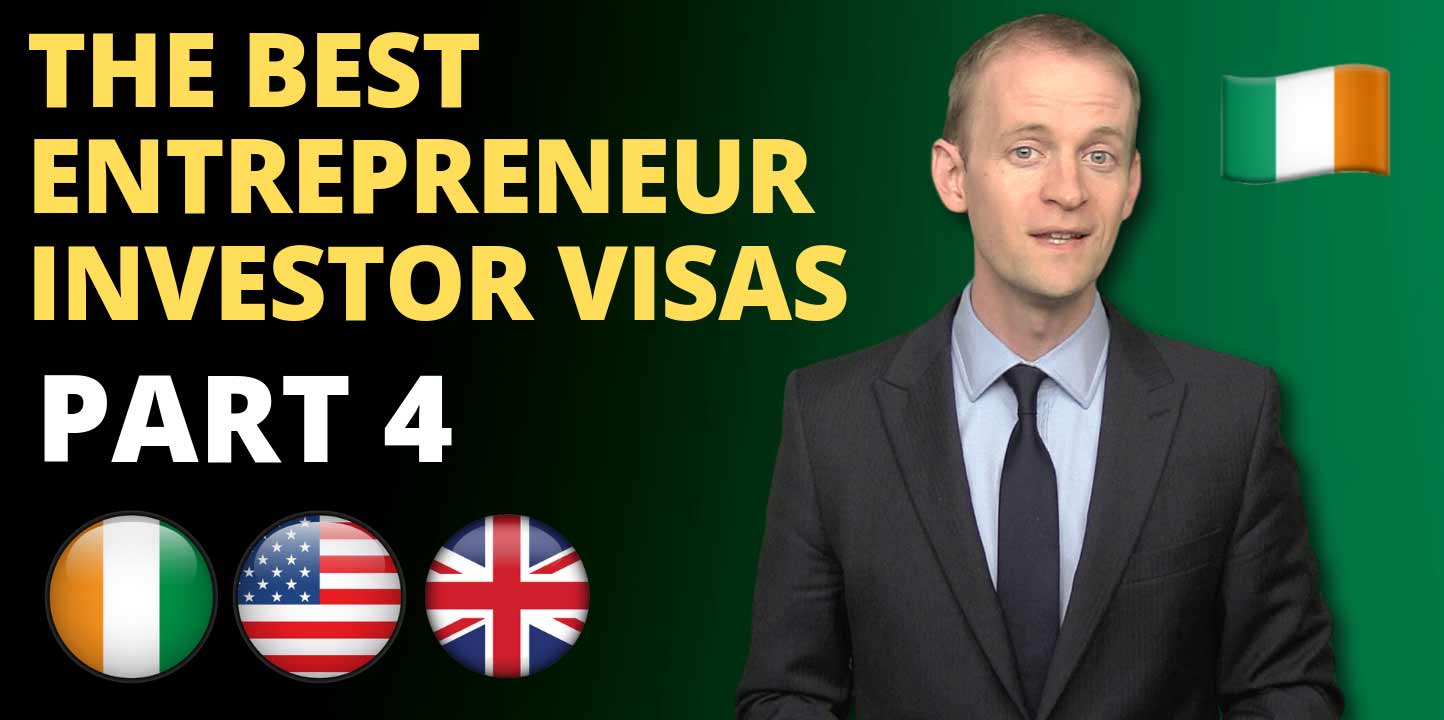
Tier 1 investor route
After that, in the UK, it jumps up to £2 million, for the Tier 1 investor route. There’s no 1 million option, like in Ireland.
And unfortunately, at the end of 2016, the UK government required dependent partners of Tier 1 investors. As well as the main applicants, to be in the UK for 180 days to qualify for indefinite leave to remain. This length of residency definitely does not suit everyone.
If you are an international business person, operating in different jurisdictions. And compares unfavorably with the Ireland €1 million route. Which allows you to be out of the country for long periods and still qualify –
I have a separate video on that option.
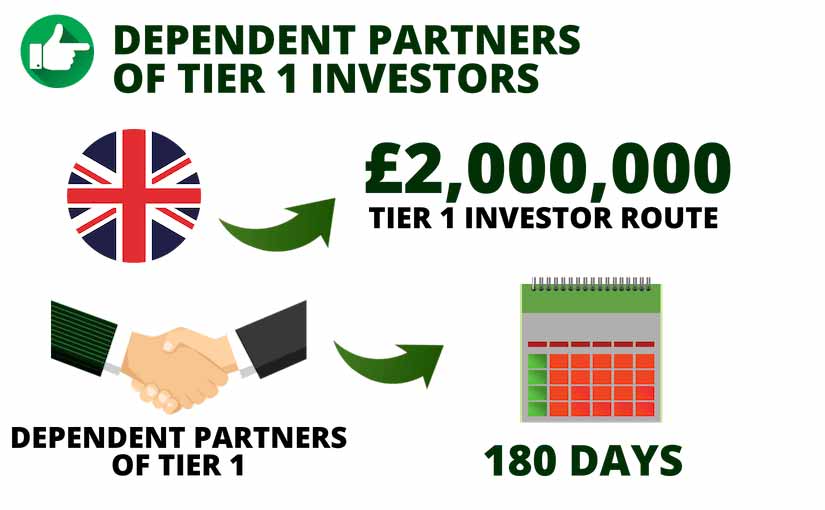
5. Don’t Rule Out Work Visas As An Entrepreneur
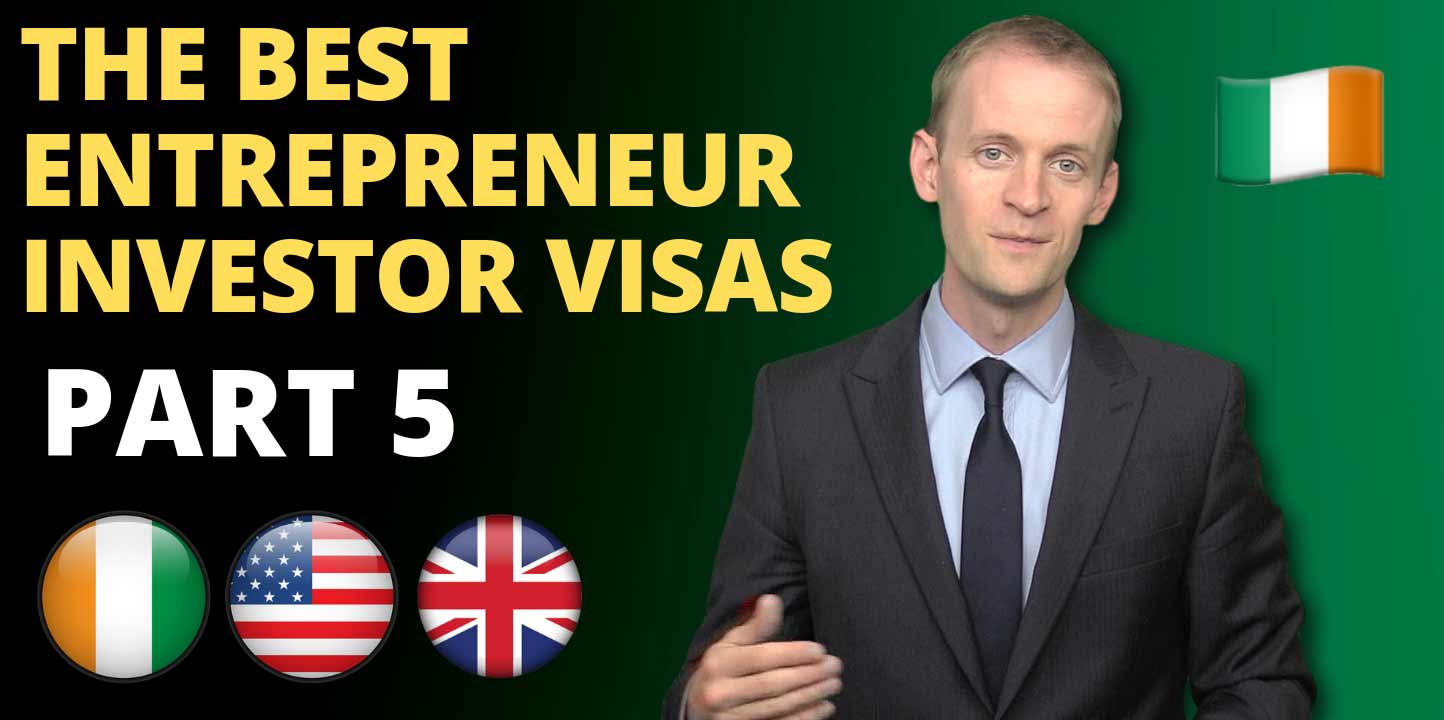
Don’t rule out work visas as an entrepreneur, as a means of achieving your objectives. So, for example, for the UK, a senior employee from your business can come to the UK as what they call a “sole representative” of your overseas company and set up a UK branch of it.
That new branch can then apply for a sponsor license and sponsor you or your colleagues to come to the UK on an intra-company basis, so from parent to a subsidiary company, for example.
In Ireland, there’s a similar structure, in that, if you play a role in the formation of a new company, and you fall within the critical skills list, you can potentially be sponsored by the company to come to Ireland.
So these routes don’t involve any minimum investment amount. They simply involve a managed process of establishing your business in one of these jurisdictions and structuring it in the correct way. And I’ve worked with small and large multinational businesses establishing branches abroad and in such a way as to facilitate key staff and senior executives to come to the country and settle.
You have to really have a working knowledge of the visa options.
In almost all jurisdictions, there’s a distinction between visa routes which lead to a settlement and those which don’t.
So it really depends on your long-term objectives. But work visas do represent another potential option for you as an entrepreneur I work with incubators which have a number of startups in different sectors, who are often looking to attract overseas investment and to partner with other entrepreneurs internationally.
This can really help them with access to foreign markets and expertise that may be not so prevalent locally.
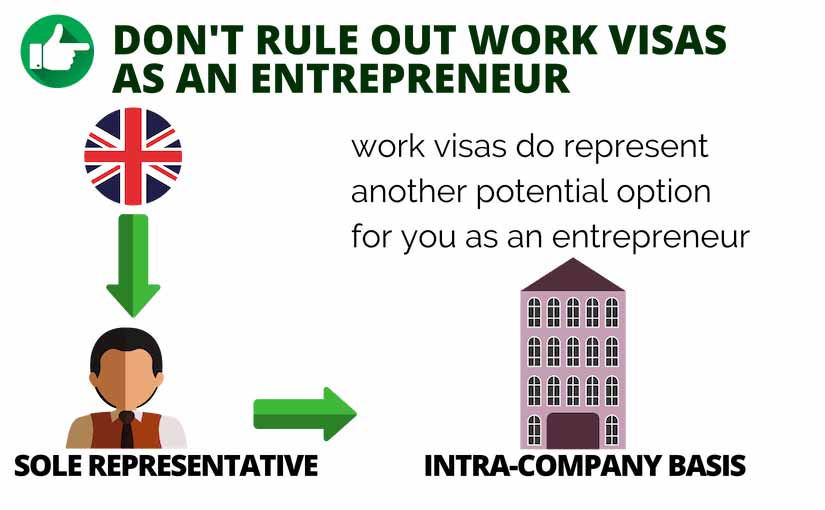
6. The other route
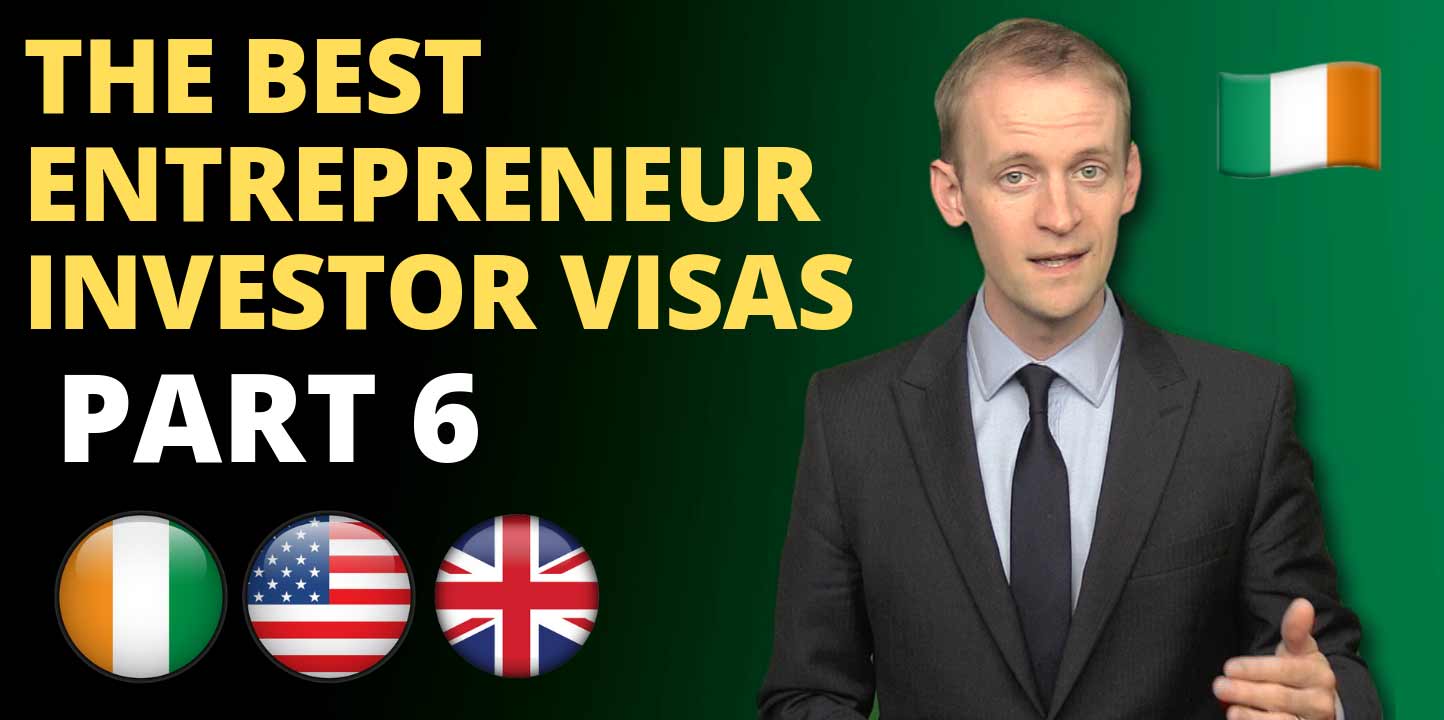
The other route which is often overlooked is an exceptional talent. There’s no need to invest €1 million or £200k if you fall within the exceptional talent criteria, and these can sometimes give you an even faster route to settlement than the investment pathways.
In the UK, for example, this route is designed for highly skilled individuals in science, and digital tech, and engineering, but also in the humanities and arts.
You can qualify if you’re internationally recognized as being a leader in your field, and have made significant contributions to your area. But there’s another route as well.
You can also qualify if you have demonstrated “potential” to contribute significantly as a “future” leader in your field. So that’s an easier test to satisfy. And many applicants are either not aware of it, or they’re too modest to think that they might meet the standard.
So as an entrepreneur this can provide a very good alternative to investing large sums of money, and I’m preparing an application for a client now in the Blockchain space, who wasn’t aware of this application pathway initially.
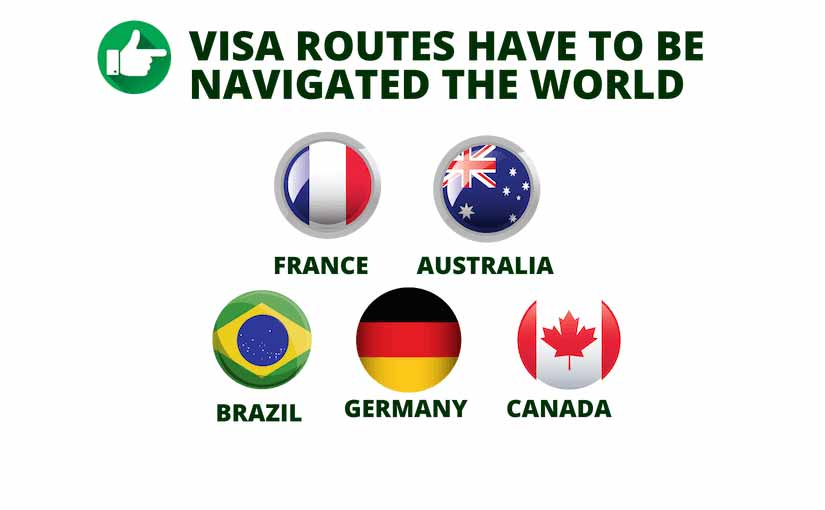
7. Immigration Environment
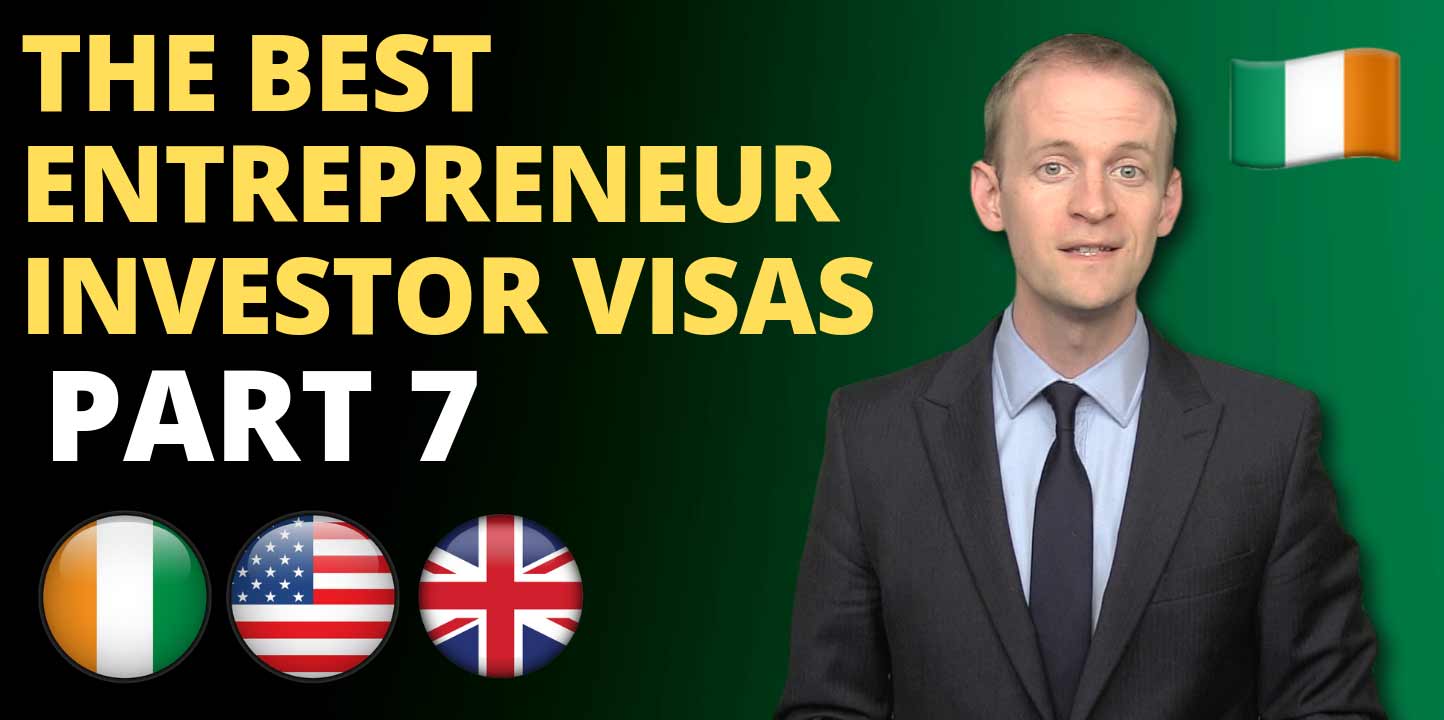
As for the United States, there’s a similar policy environment to the UK at the moment, when it comes to immigration.
On the whole, there’s a fairly challenging immigration environment, and unfortunately, entrepreneurs can sometimes be lumped in with the other types of migration and painted with the same brush. So there are two main options that I work on with clients and my US attorney.
The first is the E2 route, under which you invest a minimum amount.
Uniquely, that minimum is not specified, and the minimum you need to invest in the United States depends on the nature of the business.
Some applications are approved, with an investment level as low as $100,000. This is quite a helpful and competitive level, in that Ireland is at the €50k mark, and the UK at £200k when it comes to investing your own funds.

8. The EB-5 Visa Route
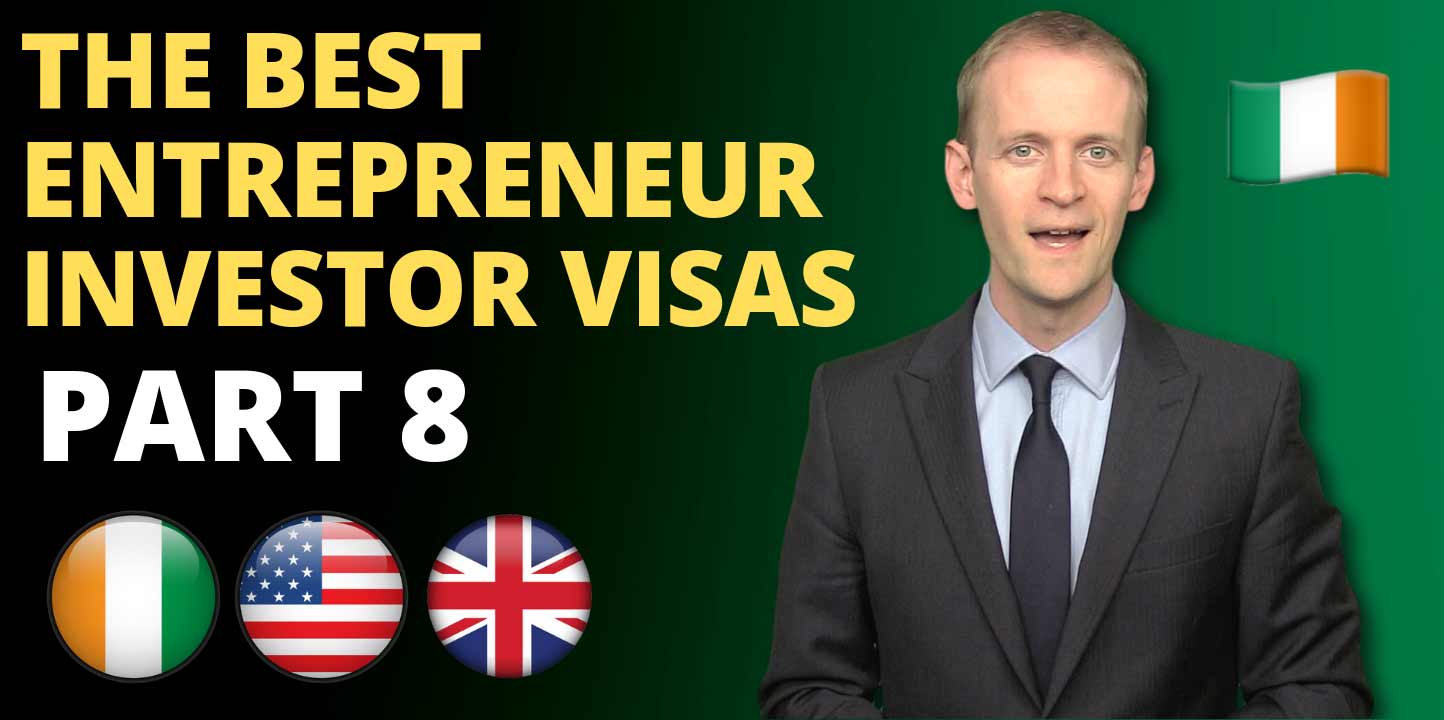
One of the challenges with the US is that generally, the sums have to be invested before you make the visa application.
This is not the case with Ireland or the UK. As you may appreciate, it’s a difficult proposition if you have to invest in a business in the United States, not knowing for sure whether your visa is then going to be approved to allow you to come to work on your business. There are ways around this dilemma, one of which is payment of the funds in Escrow, which will then only be released if the E2 application is then approved.
The other main United States option is the EB-5 visa route. Under this program, entrepreneurs are eligible to apply for permanent residence if they invest $1m in business, and plan to create or preserve 10 full-time jobs for US workers.
There’s also a lower $500k level of investment, in rural and high-unemployment areas.
The programme is under review and may be changed or even scrapped soon.
9. The Main Thing To Bear In Mind
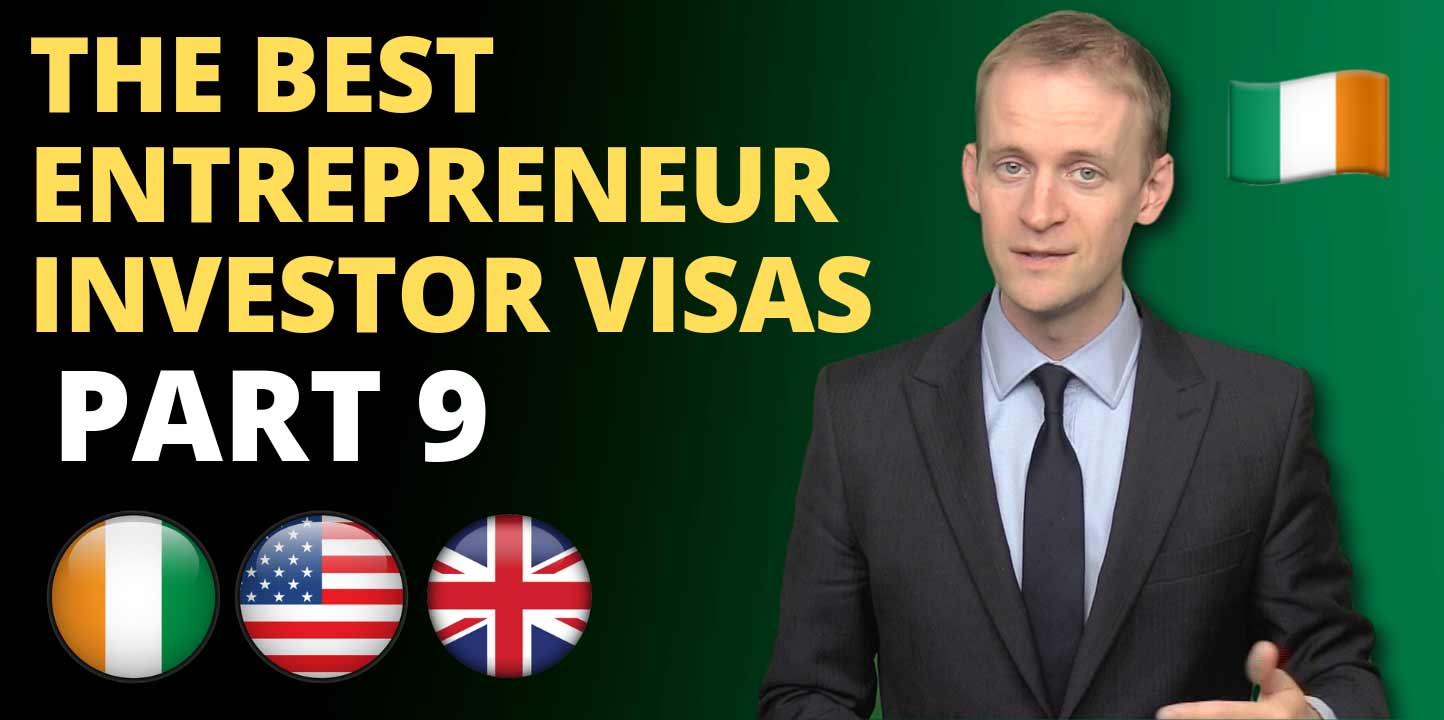
The main thing to bear in mind is that as an entrepreneur, the E2 route does not lead to a settlement in the US, so to permanent residence, in the form of a Green Card, whereas the EB-5 route does.
Where the E2 route can be helpful is that it enables you to trial run your business in the US, and then, if the business is successful, or you have the funds to raise from elsewhere, you can then transfer over to the EB5 route to secure permanent residence.
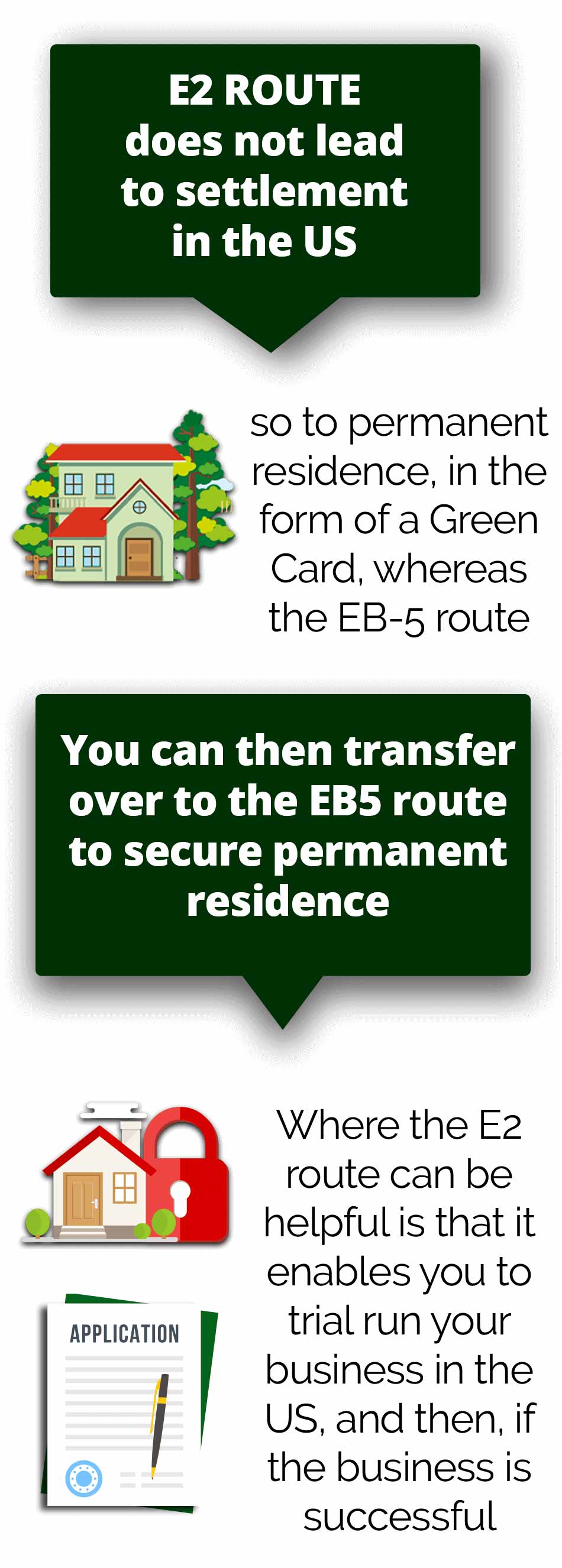
10. What I Am Doing With A Client And My US Attorney
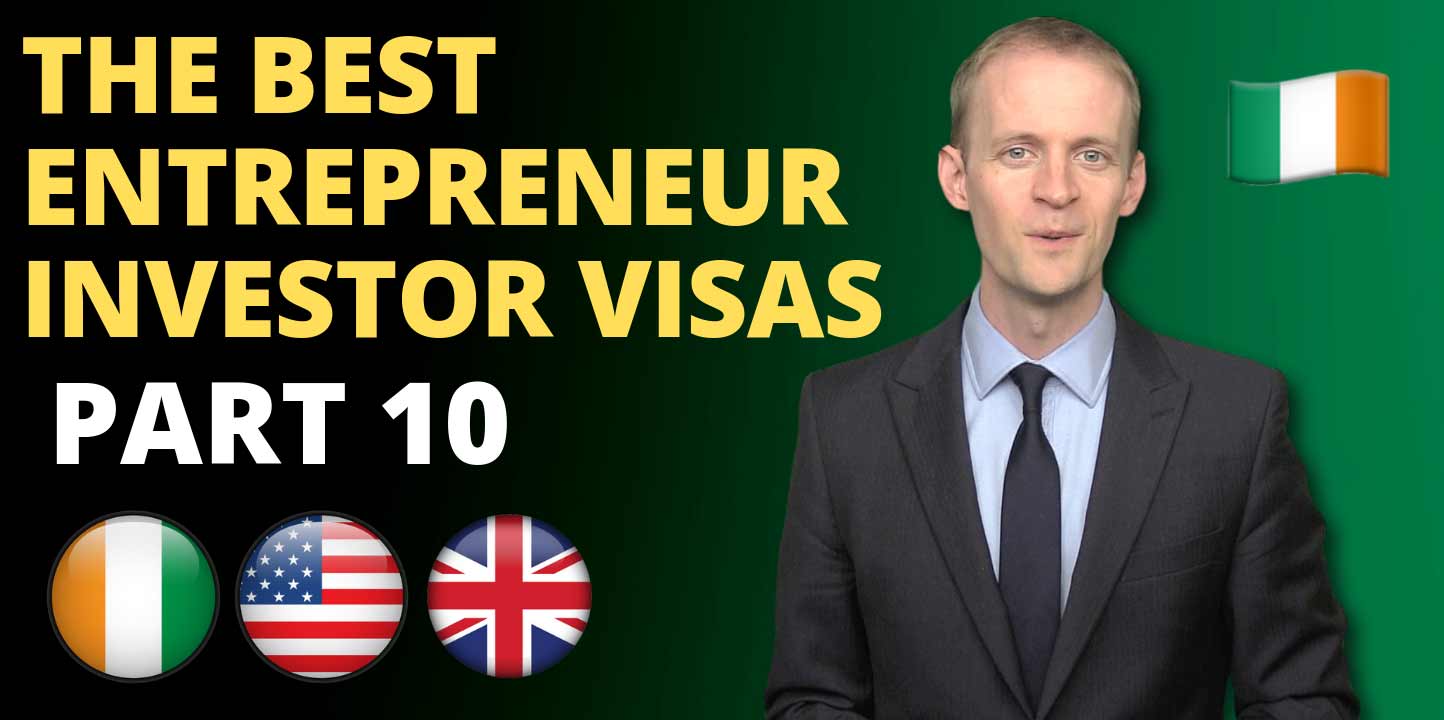
This is what I am doing with a client and my US Attorney at the moment.
So the visa routes have to be navigated carefully as an entrepreneur.
I have separate videos on this channel about the E2 and EB5 options if you’d like to learn more.
In the other videos in this series, I’m going to be comparing other entrepreneur and startup visa programmes.
In particular, we are going to have a look at France, which has a real buzz right now in Paris around startups, as well as Brazil, which has a 50k route as well.
Then we are going to cover Canada, Germany, Australia, New Zealand, and elsewhere. So do subscribe if you’re interested in following the series, and get in touch with me for an initial free consultation if you would like to discuss your options.
One of the ways I help my clients, in addition to legal help, is by connecting them with the right incubators, and accelerators, so that they are in a position to succeed when they move to the country, and they have the right framework of support from my professional network.
